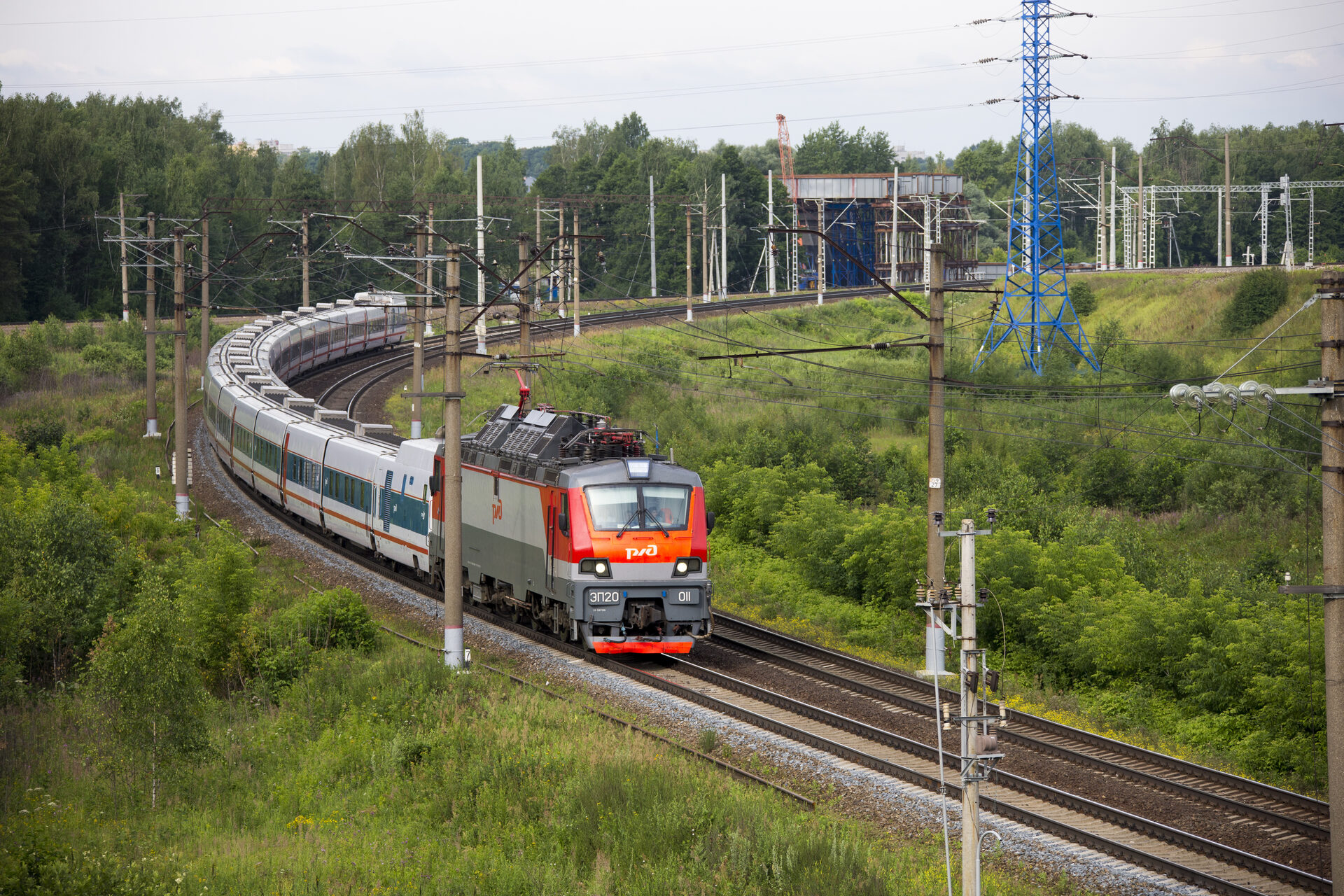
EFFECTIVE
INNOVATIVE
CONTEMPORARY
PRODUCTION
TECHNOLOGIES
COMMUNICATIONS
EN
Innovative technologies of track repair
Effective technologies are the vector of PTK Group development

JSCo "Russian Railways" set a task to modernise the transport infrastructure and introduce modern technologies to increase efficiency and optimise costs.
Scientific and Technical Council of JSCo "Russian Railways", including for the development of highspeed and heavy traffic, defined the requirements for advanced technologies for repairing the track, as well as for high-performance track machine complexes.
Based on these requirements, the PTK Group together with JSCo "Russian Railways" developed new technologies and technical requirements for track machine complexes, as well as feasibility studies that prove the economic effect of their implementation.
On the basis of a new line of machines, a multipurpose track complex for a ballast section has been created. The modular design has unique technical features, allows the use of high-performance machines in various track repair technologies. Our technical solutions have no analogues, that is confirmed by patents.
Multipurpose track complex for ballast section

BCM-2000

MML-88

RFM-100
The economic effect of the introduction of new technologies for repairing the track on the basisof a multipurpose complex is at least 34%
High-speed ballast cleaning technology
The result of technology implementation
Ballast contamination is the main cause of track defects and ballast section cleaning is the main source of costs for maintenance of the railway infrastructure.
Low productivity of ballast cleaning machines is a deterrent in improving the efficiency of track repair.
Low productivity of ballast cleaning machines is a deterrent in improving the efficiency of track repair.
- increase the speed of the ballast cleaning machine during the track repair to up to 750 m/h;
- increase the capacity and turnover of machines for material logistics with the optimisation of the logistics scheme;
- increase the efficiency of the entire technological process of repairing the track.
Technical and economic indicators

MML-88
BCM-2000
Machine for material logistics
Ballast cleaning complex
Current technology
Applicable machines:
BCM-1200,
MML-800
BCM-1200,
MML-800
New technology
Applicable machines:
BCM-2000,
MML-88
BCM-2000,
MML-88
Technical productivity, m³/h
Output in an 8-hour “window”, m/track
Number of locomotives and UTM involved

The introduction of the High-speed ballast cleaning technology based on BCM-2000 machine provides an increase in output by 2.5 times
For example, on the length of the site at 1000 meters the time of work on the new technology is reduced to 260 minutes compared to 478 according to the existing technology
Protective sub-ballast layers formation technology
The result of technology implementation
For the high-speed and heavy traffic organisation, a compacted layer-by-layer protective sub-ballast layer, which enhances the bearing ratio of the roadbed and prevents the contamination of the ballast section, is of particular importance.
- significant increase in the speed of work (up to 100–150 m/h);
- optimisation of the logistics scheme due to the organisation of local areas for material storage and preparation;
- significant reduction in material costs due to the efficient use of secondary materials.
Technical and economic indicators

MML-88
BCM-2000
Machine for material logistics
Ballast cleaning complex
Current technology
Applicable machines:
BCM-1200, MML-800, UK-25/9-18,
MPD, USO, HD, PB, ELB, ROM,
Autograders, Vibrorollers
BCM-1200, MML-800, UK-25/9-18,
MPD, USO, HD, PB, ELB, ROM,
Autograders, Vibrorollers
New technology
Applicable machines:
BCM-2000, MML-88,
RFM-100
BCM-2000, MML-88,
RFM-100
Output in an 8-hour “window”, m/track
Number of machines involved
Number of locomotives or UTM involved

The introduction of Protective sub-ballast layers formation technology provides an increase in production by 2.5 times in comparison with forein analogues
For example, on a length of 4500 meters, the time of work on the new technology was reduced to 4821 minutes compared to 8709 minutes according to the existing technology
MML-88
RFM-100
MML-88
Machine for material logistics
Sand and gravel volumetric compaction complex
Machine for material logistics
Volumetric-compacted ballast section formation technology
The result of technology implementation
The traditional technology of ballast section formation provides for the need to limit the speed of train traffic with the subsequent increase in speed as additional work is carried out (additional ballasting, straightening and stabilising the track).
- increase the train speed up to 80 km/h immediately after the repair;
- reduction in the number of stages of work by eliminating the need of additional ballasting of the ballast section;
- reduction of costs for current track maintenance, minimisation of local track defects.
Технико-экономические показатели

MML-88
RFM-100
Machine for material logistics
Sand and gravel volumetric compaction complex
Current technology
Applicable machines:
HD, ELB, VPR, DSP,
LFM-3000, PB
HD, ELB, VPR, DSP,
LFM-3000, PB
New technology
Applicable machines:
MML-88, RFM-100,
MPV
MML-88, RFM-100,
MPV
Output in an 12-hour “window”, m/track
Number of machines involved
Number of locomotives or UTM involved

The introduction of the Volumetric-compacted ballast section formation technology
will provide a significant reduction in the cost of work, as well as reducing the time for repairing the track and increasing the speed of traffic
will provide a significant reduction in the cost of work, as well as reducing the time for repairing the track and increasing the speed of traffic
For example, on the length of 1000 meters the time of work on the new technology was reduced to 697 minutes compared to 1093 minutes according to the existing technology.
MPV
Primary surfacing
machine
machine
Local storage areas organisation
Tasks
The main reason for high costs and a long period of track work is the remoteness of places for loading ballast materials.
- organisation of temporary local bases within 30 km from the site of work;
- delivery of materials with the help of new quickly loaded carriages for the material logistics MML-88
The scheme of local bases organisation

With considering the existing competencies, we create effective solutions for the logistics organisation in new technologies for repairing the track.
The result of technology implementation
- сontinuity of work of complexes, optimisation of logistics;
- efficient use of secondary materials.







